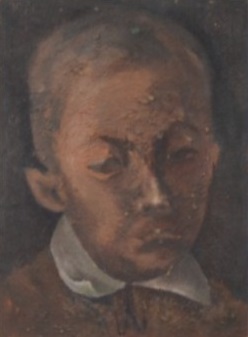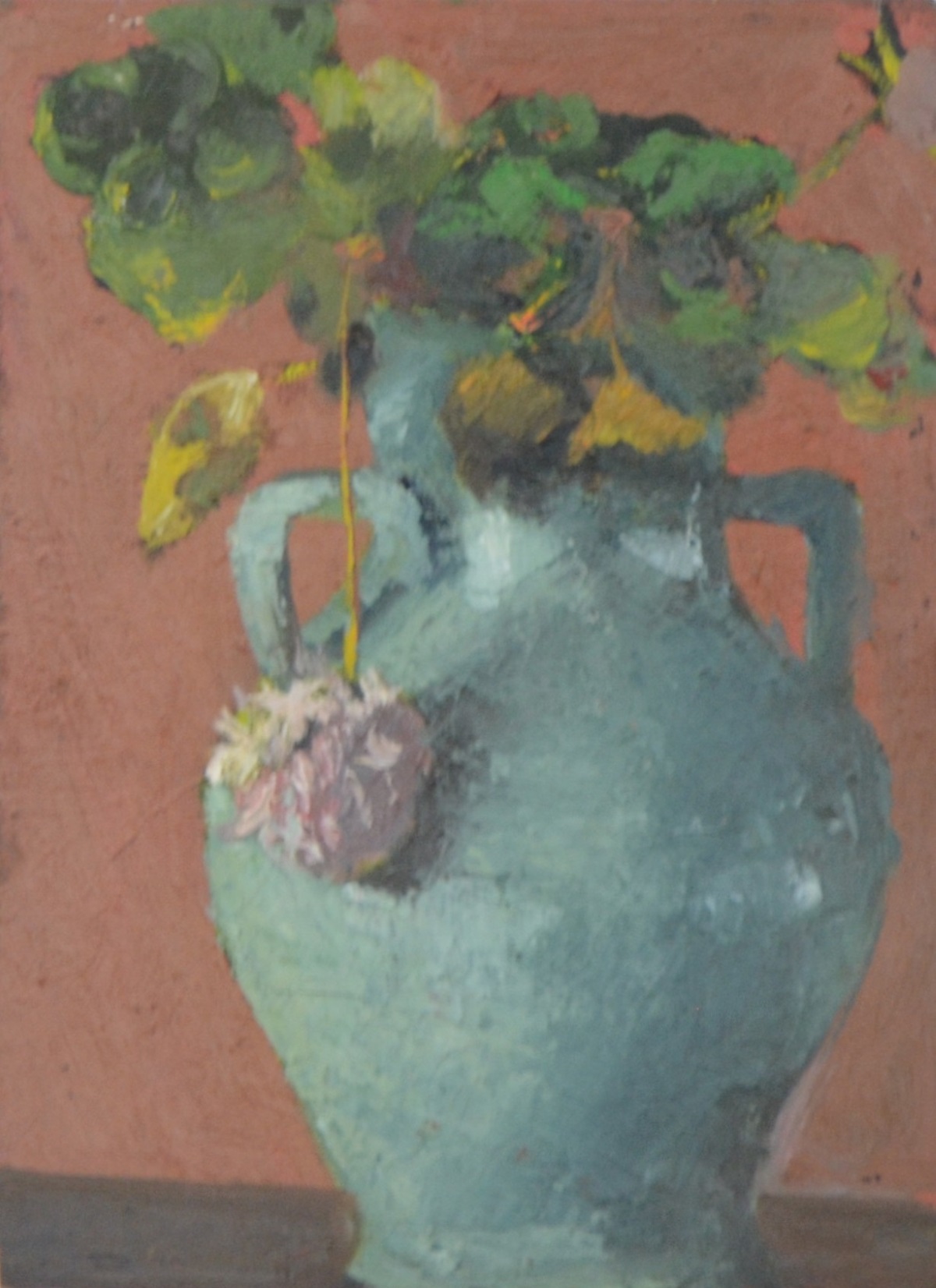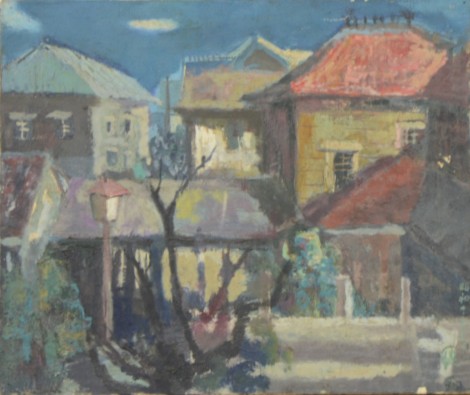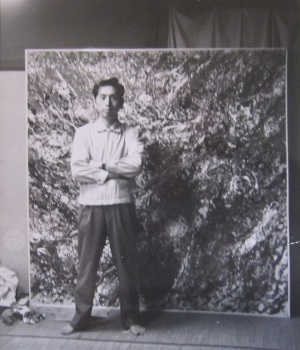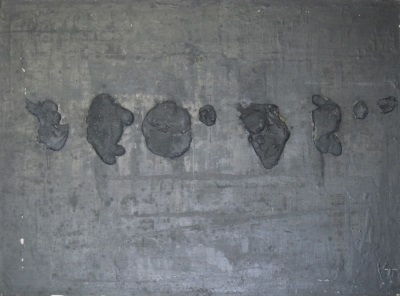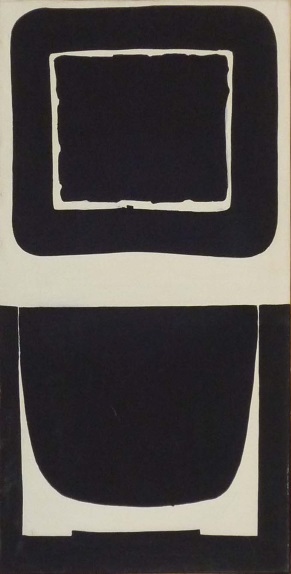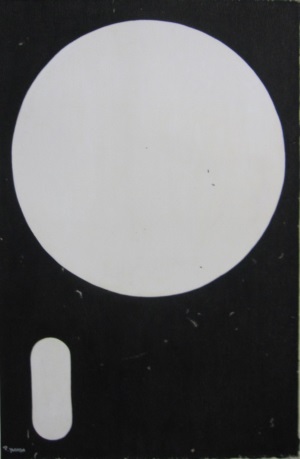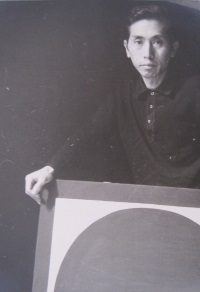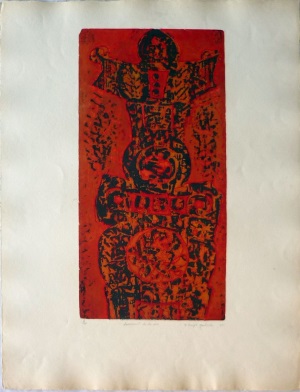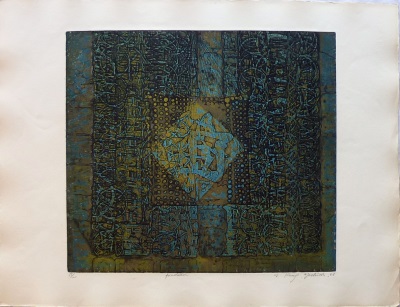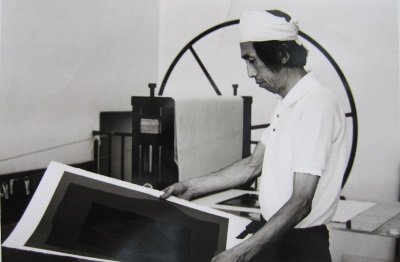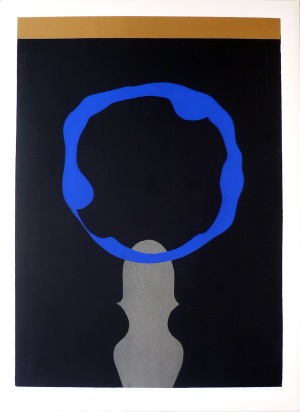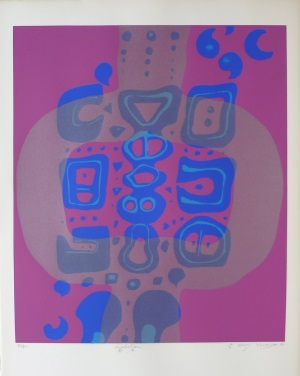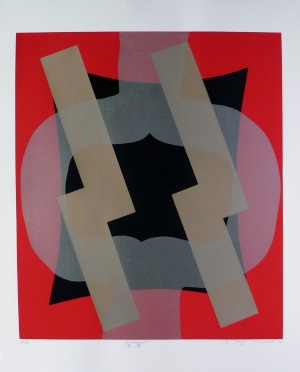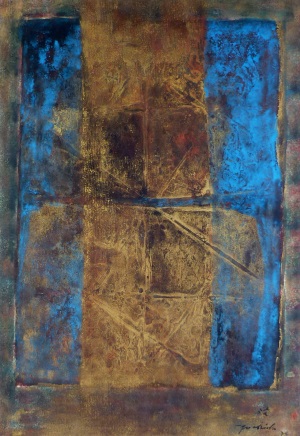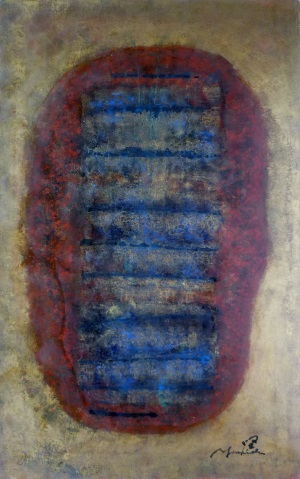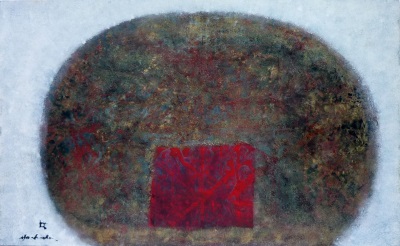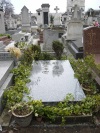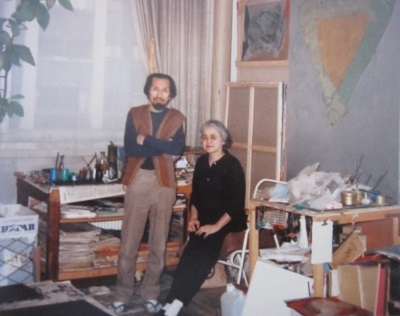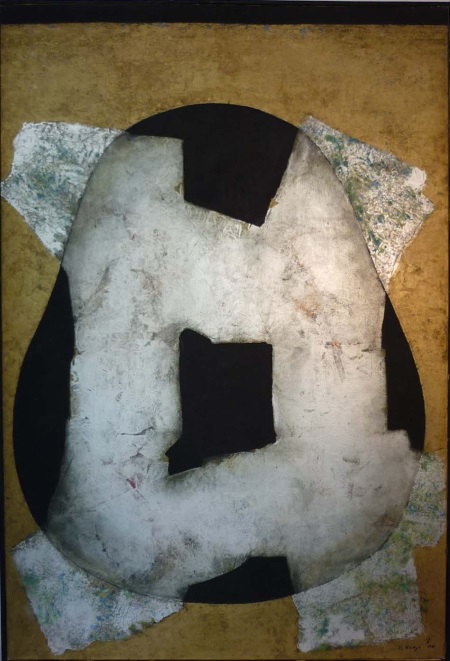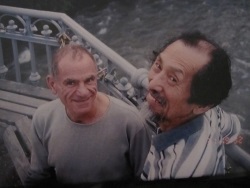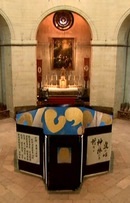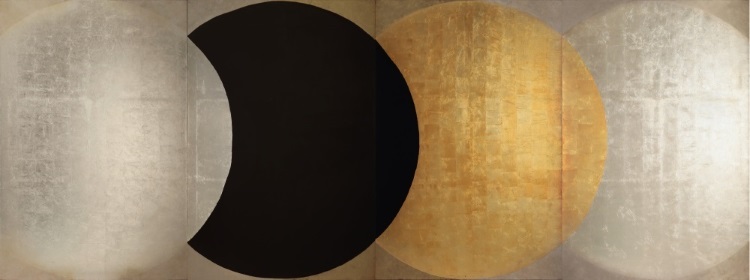KENJI@YOSHIDA
| Japanese | English |
Kenji Yoshida (gc¡ May 24,1924 - February 24, 2009) was a Japanese artist and painter, known as the gArtist of the Soulh or the gArtist of Lighth. He was born in Ikeda-shi (a city), Osaka Prefecture. After having taught art at elementary schools in Osaka and Tokyo, in 1964 at the age of forty, he quit the teaching profession to go to Paris, France. Yoshida worked out of his atelier in the Montparnasse district of Paris, and created many great works of art on the theme of gLa Vie et La Paixh, or gLife and Peaceh, thereby becoming one of the most prominent artists of his generation. He was a prolific artist until his death in 2009 at the age of 84.
Contents
T. Biography
1. From birth to normal school
From Yoshidafs notebook: "I was born in Ikeda-shi, Osaka Prefecture, on May 24, 1924, as the fourth son of the Yoshida family's nine children. The Yoshidas served as Shoya (village headman) for generations in Ikeda. Ikeda is an old town once referred to as Little Kyoto (Kyoto being a town renowned for its scenic beauty with rivers and mountains that attracted many artists from many parts of Japan). So, in the house where I was born and brought up, there were many pictures, books, pottery, and so on, of these artists. Thus, I grew up appreciating these artistic works every day. My father took over the position of Shoya, but could not manage the repayments of the heavy debts left by my grandfather. He had no choice but to sell the familyfs land piece by piece.
Isamu, my elder brother ten years my senior, took me to various places such as museums, shrines, Buddhist temples, and ancient burial mounds. Besides, it was my great pleasure to touch his oil paints, and to read his collection of books, especially his collection of his books on world art. Through these things, I began to have a strong yearning to visit foreign countries. These experiences during my early years formed the foundation of what I am today.
Later, I entered Ikeda Normal School (currently, Osaka University of Education) where I studied art and how to paint. In this school, I met many admirable teachers, and learned about Western paintings, how to appreciate them, and about their positions in and relationships to society.
Though Japanese society seemed to be adopting the flavor of war, and militarism was growing stronger day by day, the teachers at the school taught us the importance of focusing on which course of life we should take as human beings, without being influenced by what was going on in the world."
2. the Pacific War
After graduating from Osaka Second Normal School ahead of schedule in 1944, Yoshida entered the navy, and was trained to become a kamikaze pilot at Tsuchiura Naval Air Station in Ibaraki Prefecture. But before he was ordered to fly on a suicide mission, World War II ended.
"Every single day, as I was being trained at the Naval Academy, I was asking myself, what was the war all about, what was life and what was death? People stressed on the importance of life. But the war they waged was an act of crushing this precious human life. Strong anger grew inside me. Would God ever forgive such an act? "(from Yoshida's notebook)
The war ended on August 15, 1945.
3. Teaching profession in Osaka and Tokyo
After the end of the Pacific War in August 1945, Yoshida became an art teacher at Gofuku Municipal Elementary School in Ikeda, Osaka.
gAfter the war, I returned to my hometown of Ikeda, and took up the teaching profession there. On the way back to Ikeda, I witnessed many cities and towns that had been massively destroyed by bombing, and saw innumerable casualties everywhere. Every person was desperate just to survive. I was again made to think about war, and peace. Because of these experiences, whenever I thought of why and what I should draw and paint, everything seemed to possess both life and death in itself. "(from Yoshida's notebook)
In 1951 Yoshida went to Tokyo to become an art teacher at Iriarai Second Municipal Elementary School, Ota Ward. "After I settled in Tokyo, I observed that people from different circumstances and walks of life had quite different viewpoints and ways of thinking. Having realized this, in order to have my paintings understood by many people with different points of view, I decided to change my drawing style from realism that I had been employing until then, to abstraction.h (from Yoshida's notebook)
"In the 1950s, while gazing at the things that I had taken inside me, trying to find the origin of my thinking, I came to realize that in order to achieve anything, establishing myself was vital more than anything else. I then understood that the color black absorbed all other colors, and that what I was looking for was in this blackness. So, to know black was to know myself, and it was there that lay an infinite number of elements to express. This has always been the starting point of my art, the basis for capturing, contemplating, and expressing all things." (from Yoshida's notebook)
4. Going to Paris as a painter
In 1964, at the age of 40, Yoshida resigned from his teaching position in Tokyo, and went to Paris, France, to paint. Arriving in Paris, Yoshida immediately began to study graphic arts techniques at the prestigious gAtelier 17h, a print workshop founded by English surrealist and printmaker Stanley William Hayter. At that time, this atelier was the most influential art institute in the world of abstract printmaking, where Yoshida, with prominent figures such as Miro, Picasso, Kandinsky, Calder, Chagall, learned the new expressive techniques of color intaglio from Hayter, and Yoshida produced many prints himself.
"In Paris, I first began to interact with foreigners when I began to study at Mr. Hayterfs gAtelier 17h studio and workshop for etching and printmaking in Montparnasse. Then, with deepening of my interaction and friendship with these people at the atelier, they invited me to their own countries. I was able to experience firsthand the culture and life of their countries through these visits, which broadened my views of the world. Fortunately, with the help of these friends, I could hold my solo exhibitions of prints, and with sales of these works, I could manage to earn a living."(from Yoshida's notebook)
In 1966 Yoshida participated in the founding of the "Atelier du Nord", a group of young--mainly Scandinavian-- artists based in Paris, through which he received a scholarship from the Norwegian government.
In1967 Yoshida became an assistant to a Spanish sculptor, Apel-les Fenosa, and studied sculpture.
"I became an assistant to the sculptor, and so my daily life changed slightly. Since I can live in the sculptorfs atelier, I can earn enough to feed myself." (from Yoshida's letter of May 11, 1967)
"I was Apel-les Fenosafs assistant for just short of three years. He always looked at each work-in-progress from the perspective of a potential finished work, and thus, he boldly began again if he found something unsatisfactory. At the same time, he commanded me to make it a must to finish one work a day. Even now this remains one of his most influential pieces of advice he ever gave me: to stick to in my daily routine."(from Yoshida's notebook)
In 1968 Yoshida went to Israel, stayed at the Shamir Kibbutz for two months. He also went to many places in Israel, Syria, Lebanon, and Jordan. In 1972 Yoshida was granted permission from the French government to live and paint in an apartment/atelier in Montparnasse. There, for the first time, Yoshida made silkscreen prints (serigraphy).
In 1973 Yoshida married Hiroko Uehara from Tokyo.
Around this time, he made oil paintings on paper.
In 1978 Yoshida visited Milan, Florence, Pisa, and Siena in Italy.
5. La Vie (Life, Seimei or Inochi) Title of paintings
From this time on, Yoshida titled all his paintings, "La Vie"
"After reflecting seriously on life, and considering how to express the root of life in my paintings, I finally realized that, instead of expressing the ever-changing moment of life, I should express one immovable moment of life. So, after arriving at this insight, I decided to title all my paintings gLa Vie (Life)h, and began to apply shapes and colors suitable for this purpose. "(from Yoshida's notebook)
In 1983, as Yoshida had an urge to go back to Japan and see its culture through fresh eyes, he returned to Japan for the first time in twenty years, and stayed for three months, visiting various places.
"I strongly feel that I must review Japan for my paintings. As for funds for the journey, I will have to borrow some. I will manage by asking friends and acquaintances for assistance. After all, itfs my first return after a long absence." (from Yoshida's letter dated November 19, 1892)
gEvery day I am grateful because I live a full life, although financially I am not well off." (from Yoshida's letter dated July 26, 1983)
In 1986 Yoshidafs wife, Hiroko, died of cancer.
"I have been wondering how I could accept the loss of my wife, Hikoro, and how to come to terms with my existence as an artist. I have finally reached the conclusion that as this world obeys the laws of nature -- and that includes life and death -- there is no use but accept death as death. I had thought that I could paint a most balanced and reasonable work when I was as straight and honest as possible while drawing a picture. But when I faced the fact of my wifefs death, that was one of the most critical moments of my life, to my regret, I could not apply this feeling to my work. When I look back on this time, in reality, I didnft stand in front of the canvas, and I couldnft look squarely at the reality of my daily life. "(from Yoshida's letter of January 17, 1987)
On the grave of Mr. and Mrs. Yoshida in Montparnasse Cemetery, Paris, engraved are these words: "ßòØ_(Syaku Nikaun)", a female posthumous Buddhist name for Yoshidafs wife, which means Flowery Cloud, and "ßó(Syaku Souku)h, a male posthumous Buddhist name for Yoshida, which means Blue Sky. These posthumous Buddhist names, or homyo, for Mr. and Mrs. Yoshida had been given by Mr. Matsubayashi, a former teacher of Ikeda Normal School in Osaka. When his wife died, Yoshida carved these two homyos on their tombstone by himself.
6. Maya Series
In 1987 Yoshida visited Cairo, Alexandria, and Luxor in Egypt.
In 1989 Yoshida came to know Mr. Jose Ferez Kuri, who became his lifetime agent and friend. From 1990 to 1991, Yoshida stayed in Mexico and Cuba with Jose for 3 months and produced his Maya series.
"I believe that all living things will not, and cannot, ever leave nature no matter what. This is because the great universe, where all living things exist, is a great nature by itself with one life in it. "(from Yoshida's notebook)
" At night in Mexico, I experienced the actual and real space that I had experienced in my imagination, so to speak, before. I experienced these things when I sat under a starry sky and under the moon in the middle of the night. I felt then that I was there admirably in this great universe. This was the feeling that I perceived when I saw how those Mayan ruins stood, and the way they were interwoven with surrounding mountains and plains in the vast nature."(from Yoshida's notebook)
"Whenever I reflect on life, I cannot help reflecting on the existence of God, and thinking that life is activated and moved by God's revelation (nature's providence). Although I had been expressing life by way of colors and forms, when I thought about the world of God, I felt that I had to express God in more effective ways than only in colors. I then I came up with an idea of using gold and silver to depict Godfs revelation or providence, since gold and silver are metals with very stable elements, and therefore suitable for God. At that moment, it was a revelation to me that the Great Universe became the world of God."(from Yoshida's notebook)
In 1993 Yoshida held a solo exhibition, "La Vie", at the British Museum in London, making it the first solo exhibition of a living artist at the history of the 230-year-old prestigious institution.
In 1997 a solo exhibition of the "Maya" series was held at the Museum of Modern Art in Mexico City.
1998 Yoshidafs gMayah solo exhibition was held at Museo de Arte Contemporaneo de Yucatan and Museo de Aguascalientes (Mexico) .
7. "Places of Prayer"\Wishing for World Peace
Yoshida and Jose Feres Kuri, Yoshidafs long-time agent and friend, worked on the task of creating an installation dedicated to the worship for peace. This installation consisted of 12 panels, with 195 cm in height and 1560 cm in width. This was exhibited as "Place of Prayer" at the three major cathedrals in the UK and Ireland.
2000
Christ Church Cathedral (Dublin, Ireland)
2002 Norwich Cathedral
(Norwich, UK)
2003 Canterbury
Cathedral (Canterbury, UK)
2006 A solo exhibition "La Vie et la Paix de Yoshida Kenji" was held at Blois Castle
2007 A solo exhibition "Inochi to Heiwa - Life and Peace" was held at the October Gallery
2008 A solo exhibition "VIE ET PAIX" (life and peace) was held at the UNESCO headquarters
2009 Yoshida returned to Japan due to illness, and two weeks later he died of
cancer in Tokyo.
He was 84.
" eLifef brightens the most when peace prevails. ePeacef is the supreme beauty."@Kenji Yoshida
U. Main solo exhibitions
1989 "Life" October Gallery, London
1991 "Infinite Light" October Gallery, London
1993 "La Vie" British Museum, London
1997 "Yoshida Kenji EL ANTIGUO JAPON Y LO MAYA" Mexican Museum of Modern Art,
MexicoCity
1998 "Yoshida Kenji EL ANTIGUO JAPON Y LO MAYA" Merida Yucatan Museum of
Contemporary Art, Mexico
2000 "LA VIE THE ACT OF LIVING" Christ Church Cathedral, Dublin
2001 "In the middle of a trip" Shinjuku Park Tower Hall, Tokyo
2002 "Unexpected Encounters" Galerie Prisma, Bolzano
2002 "LA VIE THE ACT OF LIVING" Norwich Cathedral, Norwich, England
2003 "LA VIE THE ACT OF LIVING" Canterbury Cathedral, Canterbury, England
2003 "life force" October Gallery, London
2006 "La Vie et la Paix de Yoshida Kenji" Blois Castle, France
2007 "INOCHI TO HEIWA - LIFE AND PEACE" October Gallery, London
2008 "VIE ET PAIX" FRANCE, UNESCO Headquarters, Paris
2010 "A Celebration of Life" October Gallery, London

